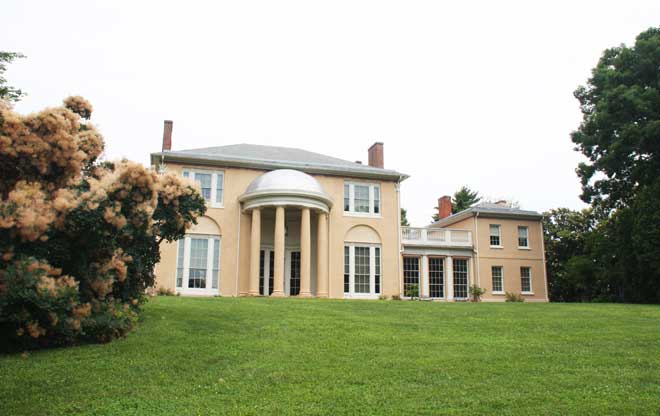
South Lawn
The main portico of the home looks over the South Lawn and once commanded a spectacular view to the city and the Potomac River beyond. Magnificent tulip poplars, planted by the first owners, still line the lawn and provide a pastoral setting.
Image: Sherry Zhang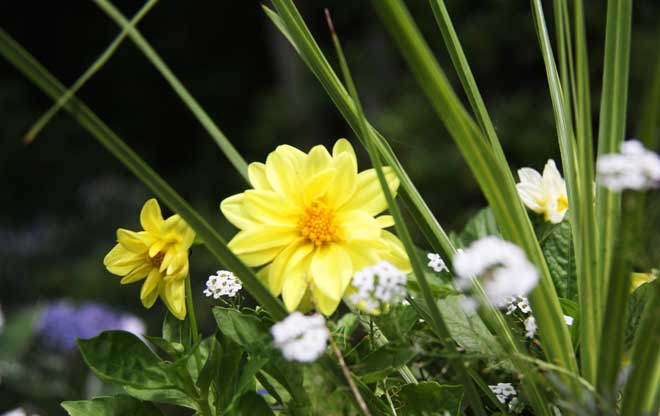
Intimate Garden Rooms
The site is divided into intimate garden rooms, furnished with elegant details and lovely little surprises. Three full-time gardeners ensure that the gardens are beautiful in every season. They are knowledgeable about the history and horticulture of the gardens and happy to answer questions.
Image: Sherry Zhang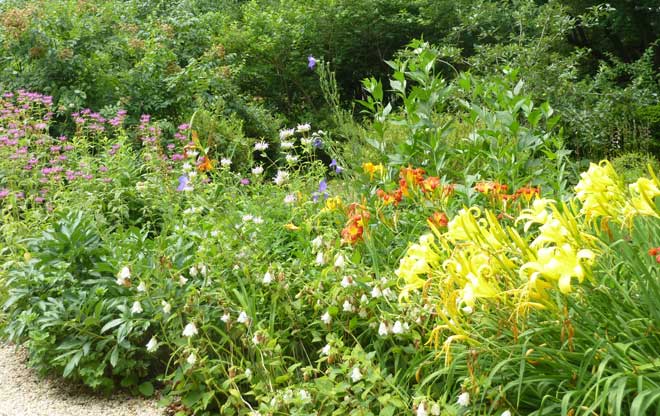
Knot Garden
Most of the gardens are located on the north side of the home. The herbaceous border just north of the formal Knot Garden is a riot of color on the summertime. Nearby, the Tennis Lawn still looks as though the family might arrive any moment for a match. Each garden area is framed by masses of flowering shrubs, perennials, and some of the fruit trees from the Peters’ orchard.
Image: Joanne L. Shelly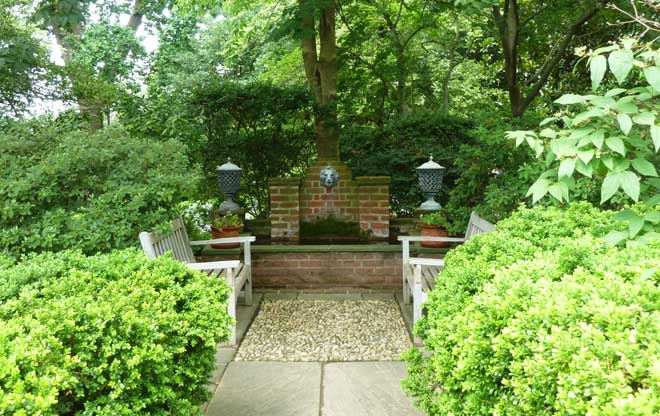
Lion Fountain
The variety of spaces on the grounds is one of the intriguing aspects of Tudor Place. Scattered throughout the site are quiet little places like seating nook at the Lion Fountain, tucked out of the way, but still offering glimpse views to the Knot Garden, Bowling Green, and Circle Garden.
Image: Joanne L. Shelly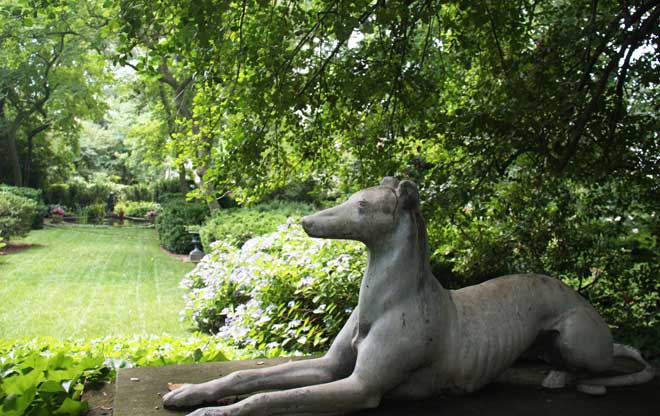
Bowling Garden
The Bowling Garden is an exquisite space, rimmed by banks of plants and some of the site’s oldest trees. At its northern end, two striking greyhound sculptures sit like sentinels, while a beautifully detailed water feature nestles among shade plants at the southern end.
Image: Sherry Zhang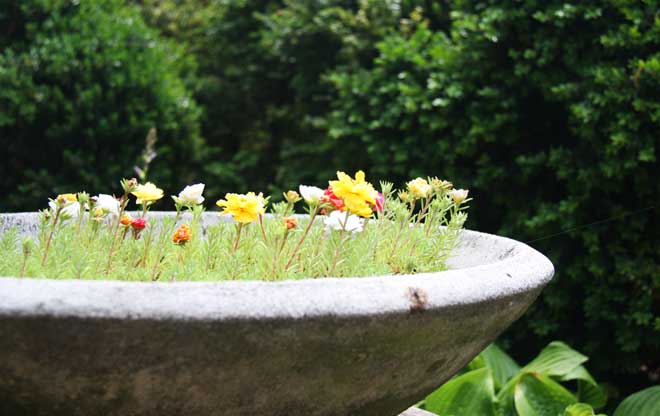
Ornamental Details
Many of the ornamental details remain from the original gardens. Stone urns and bowls, rich combinations of brick, cobble and stone paving, and elegantly designed walls speak to the care and attention of generations of family members and skilled craftsmen.
Image: Sherry Zhang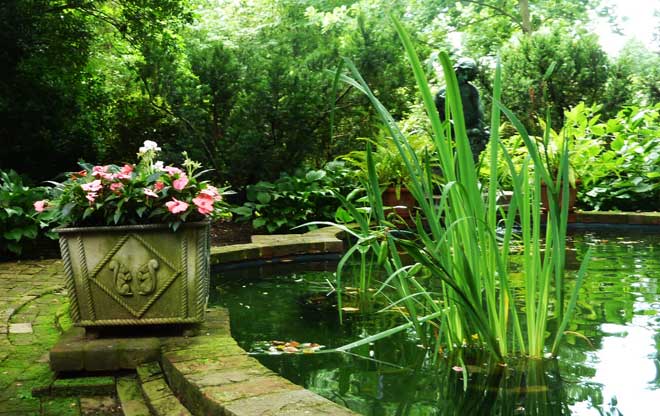
Lily Pool
Near the Bowling Green, the Lily Pool features aquatic plants and a statue by noted sculptor Paul Wayland Bartlett. Bartlett also designed the House of Representatives portico at the U.S. Capitol building in the early 1900’s. In the Dell, a wooded hillside just to the west, a nature trail winds through indigenous plants and magnificent old shade trees.
Image: Joanne L. Shelly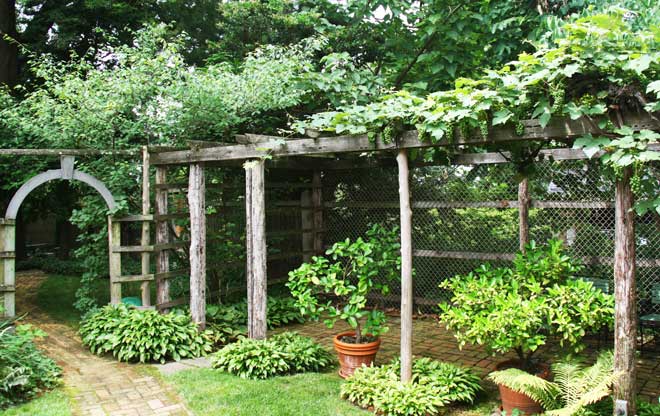
Arbor
On the west side of the house, the picturesquely aged Smokehouse Arbor frames courtyard spaces and a view to the Japanese Tea House. The nearby east-west arbor was built in the early 19th century and still graces the southern edge. Fragrant and edible plants like lilac, honeysuckle, rose and grapes hang in lush layers.
Image: Sherry Zhang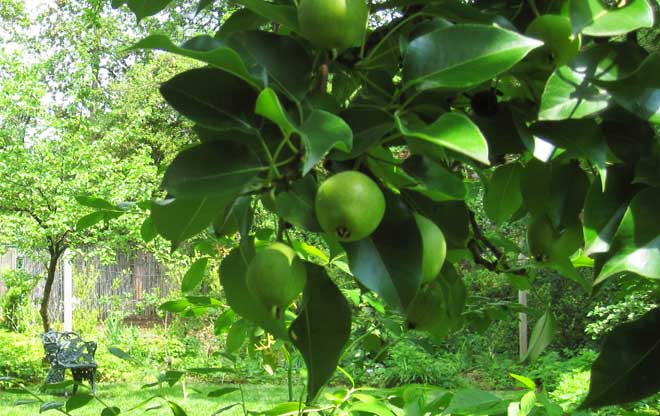
An Agrarian Past
Tudor Place once featured kitchen gardens, orchards, a hay field and grazing pasture. The designers managed to create a site that was not only a place for recreation, entertainment and quiet beauty, it was a fully functional and productive “gentleman’s farm” for much of its history. Today the remaining orchard trees and grape vines still bear fruit and hint at Tudor Place’s agrarian past.
Image: Esra Soytutan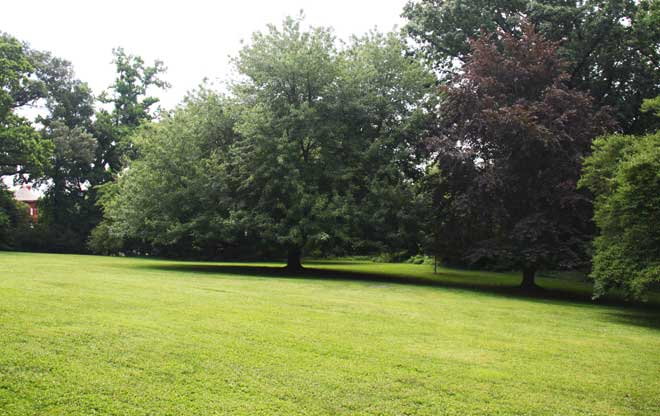
A Sweep of Open Green Space
Arriving back at the South Lawn, the wide sweep of open green space is a marked contrast to the small and intimate gardens elsewhere on the grounds. Tudor Place is a marvelous collection of historic spaces – indoor and out – and it offers a window to family life in Washington. D.C. from the early 1800’s to the present day.
Image: Sherry Zhang